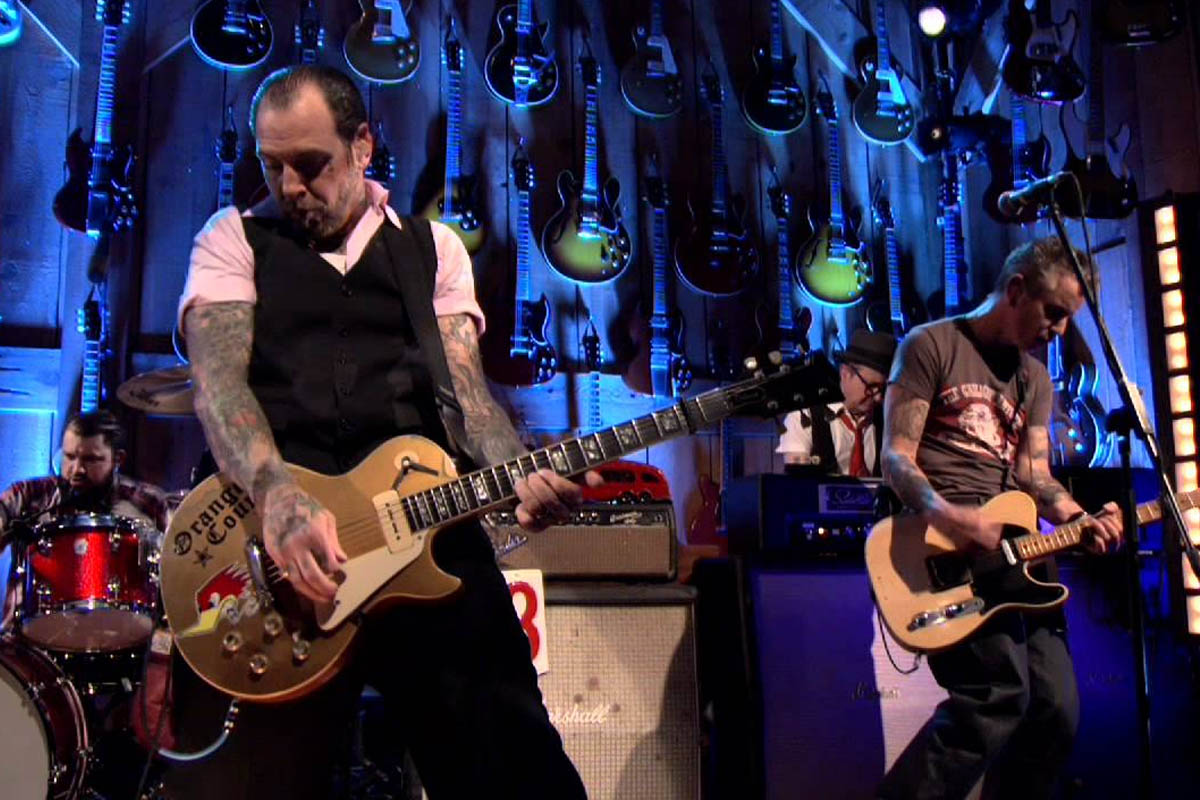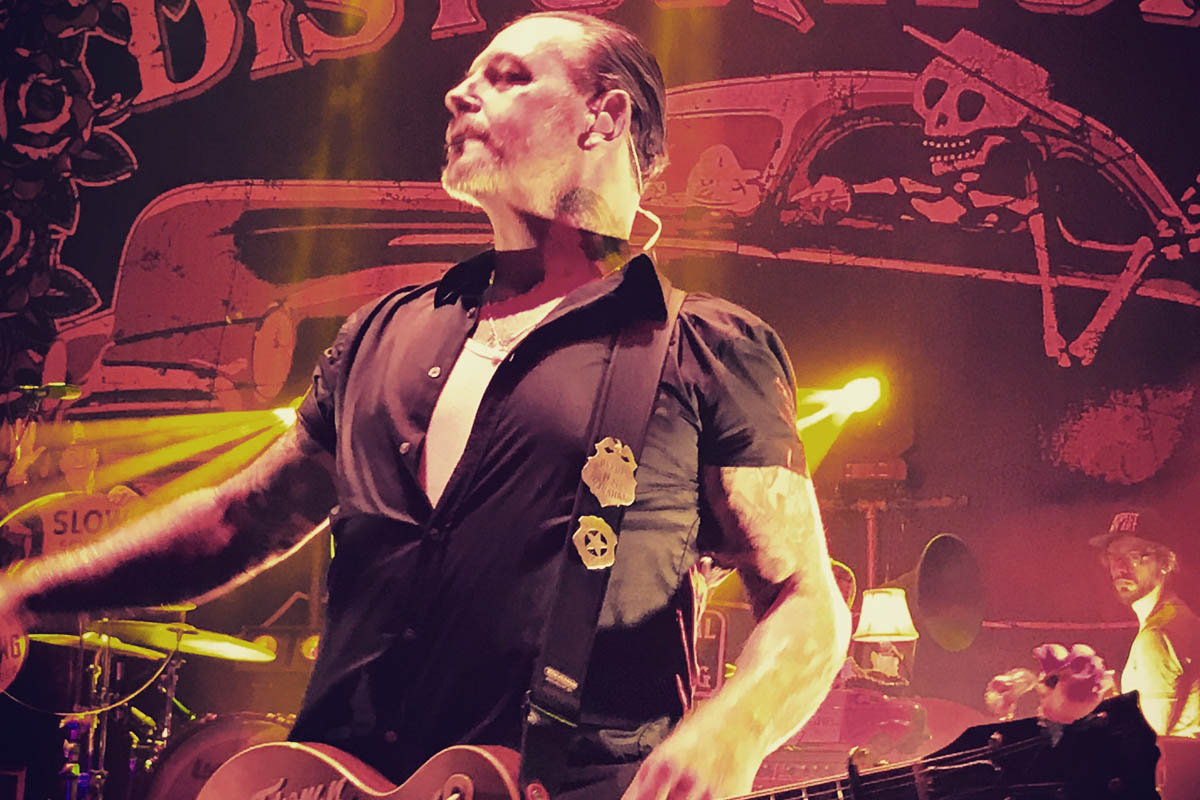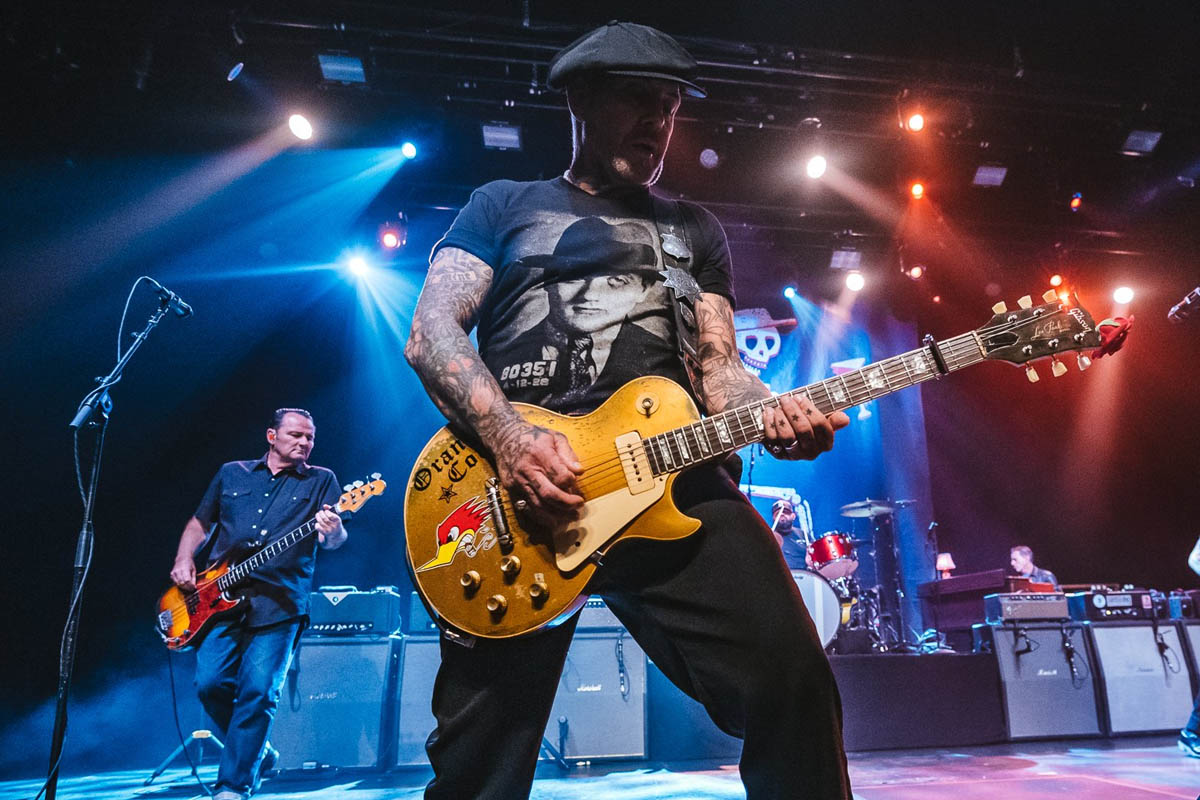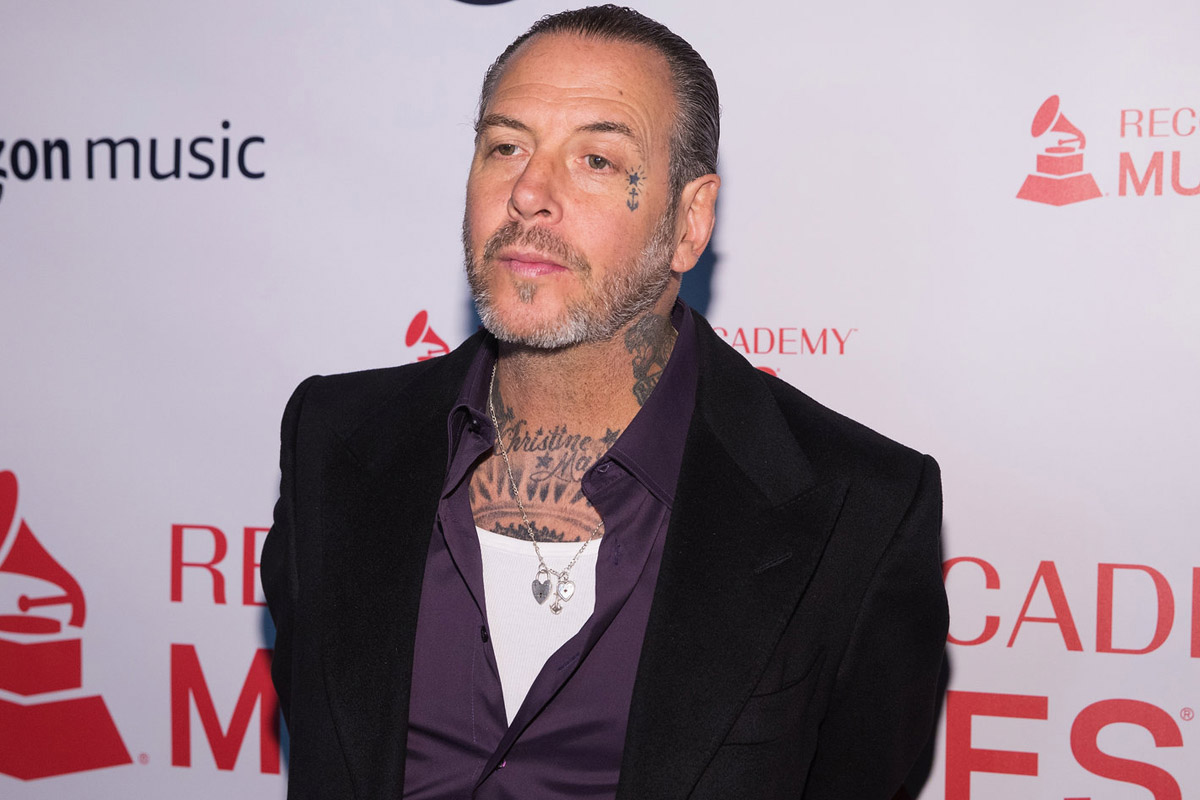Social Distortion has been around for over four decades. They are blending punk, rock, country, and blues into a sound that doesn’t fit neatly into any category. They’ve got a fanbase, but they never reached the same mainstream success as bands like Green Day or The Ramones. Here’s why.
Their Sound Doesn’t Fit a Single Genre

One of the biggest reasons Social Distortion never became a mainstream band is that their music doesn’t fit into a single box. They started in the late ‘70s as part of the Southern California punk scene, but their sound changed over time. They mixed punk with rockabilly, country, and blues, and created a style that was hard to define.
Some fans appreciate this mix, but others find it too slow or lacking the energy of traditional punk. Their songs often follow the same mid-tempo pace with country-style melodies and slurred vocals. This gave them a unique identity, but it also made them harder to market to a broad audience.
They Lost Punk Fans Over Time

In their early days, Social Distortion was considered an important band in the Southern California punk scene. Albums like ‘Mommy’s Little Monster’ were well received, but as their sound shifted, some fans lost interest.
By the 1990s, they moved away from fast punk songs and leaned more into bluesy rock. Some people saw this as growth, others thought they had lost the energy that made punk exciting in the first place. Many fans of classic punk bands, like The Exploited or Black Flag, didn’t connect with Social D’s later work.
Their image also played a role. Over the years, they had a look inspired by 1930s gangsters—fedoras, pinstripes, and outlaw themes. This gave them a recognizable style, but some felt it became repetitive.
They Signed to a Major Label—But It Didn’t Last

Social Distortion eventually signed to a major label like many underground bands. In 1988, they joined Epic Records and released their self-titled album in 1990. This album included some of their most famous songs, like ‘Ball & Chain’ and ‘Story of My Life.’
This gave them more exposure at first. They got radio airplay and a chance to tour across the country. But the major label experience wasn’t what they expected. Instead of growing, they found themselves in debt and felt like the label wasn’t doing much to help them.
They decided to leave when it came time to renegotiate their contract, and go back to doing things on their own. This gave them more control, but it also meant they wouldn’t get the same push from the industry as other major-label bands.
Their Fanbase Got Older

Social Distortion fans discovered them in the ‘80s and ‘90s. They still have a loyal audience, but their concerts today are mostly filled with older fans who grew up with their music. This is different from bands that consistently attract new, younger listeners.
Some people describe Social D as a ‘starter punk band’—a group that teenagers get into before moving on to heavier or faster punk. Others say their slower style makes it harder for new punk fans to connect with them.
Punk music has changed over the years, and newer bands with a more aggressive or modern sound took the spotlight. This made it even harder for Social Distortion to gain new fans and stay relevant in mainstream rock.
Mike Ness’s Personal Struggles Slowed the Band Down

Mike Ness has been open about his struggles with drug and alcohol addiction. In the ‘80s, these issues affected the band’s ability to tour and record consistently. Ness eventually got clean, but the years lost to addiction played a role in why they didn’t break through earlier.
Even in recent years, unexpected events delayed the band’s progress. In 2023, Ness was diagnosed with tonsil cancer. This forced them to postpone their tour and put their album on hold. He is expected to make a full recovery, but this was another setback for a band that already releases albums slowly.
Their next album, which was originally planned for 2024, will likely not come out soon.
They Never Chased Trends

Many bands change their sound to fit what was popular, but Social Distortion stayed true to their style. This helped them keep a dedicated fanbase, but it also meant they didn’t take advantage of mainstream trends when punk and alternative rock were at their peak.
They never had the kind of massive radio hits or MTV exposure that pushed bands like Green Day, The Offspring, or Blink-182 into the mainstream. They stuck with their blend of rock, country, and punk instead of adapting their music to fit what was selling,
This approach kept them respected in the underground scene, but it probably prevented them from becoming a household name.
Where Is Social Distortion Now?

Social Distortion never became a mainstream band, but they are still active. Despite health setbacks, Mike Ness is preparing to finish their next album. You can catch up with the band and follow the latest news about their current tour here.





